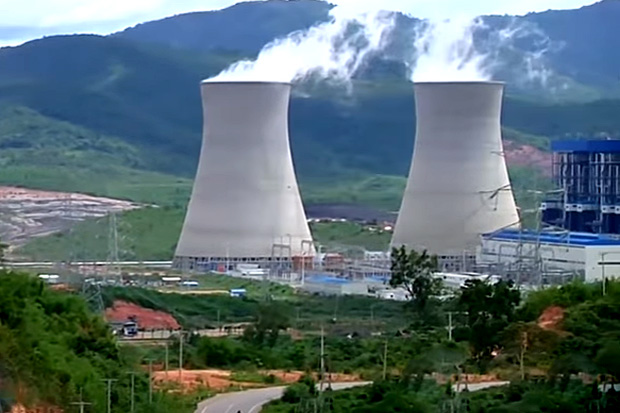Hundreds of families in the northwestern part of Laos have been forced to leave their homes to make way for the expansion of a lignite power plant.
Authorities said the displaced families will be compensated but residents claimed that the compensation is only a fraction of the true market value of their homes and farmlands.
“The plant and authorities have agreed to pay [US $0.12] per square meter of farmland and [US$ 0.20] per square meter for constructed facilities,” a Radio Free Asia report quoted a provincial government official.
The 1,878 MW Hongsa power plant, the first lignite plant in Laos, began Phase I of its operations in 2015.
Phase II began the following year when construction was completed, and now the plant is planning Phase III, an expansion.
A Radio Free Asia report said Hongsa’s construction in the northwestern province of Xayaburi resulted in thousands of villagers losing land with little compensation.
“The plant recently gained a new concession of an addition of 2,700 hectares of land for our Phase III expansion,” said a member of Hongsa’s management team.
“The land will cover the entire village of Kiw Ngiew and a part of Pang Bong Village in Ngeun District, Xayaburi Province,” added the official.
Kiw Ngiew is home to 115 families, while 18 more households live in Pang Bong.
Residents, meanwhile, have been demanding “higher compensation” for their properties. “We want to be able to live our life the same way we do now,” said a resident.
“Most of us want to stay because the compensation is too low and the new homes will be far below the value of our current homes,” another villager said.
“We’re still staying in our homes in our village and farming our own land for now because nothing has happened yet, but when we move to the resettlement village, where are we going to farm?” added another resident.
“What kind of land are we going to get, if any at all? We know that the new land will be on top of a mountain with no access to water,” the resident said.
Beyond the human toll, Hongsa’s expansion will be detrimental to the area’s biodiversity, an environmental official told RFA.
“The expansion will cut down large parts of the forest, causing wildlife to disappear,” the official said.
Health experts say that Hongsa is dangerous to those living near it, increasing risk of cancer, respiratory problems, and birth defects due to exposure to pollution.
The Hongsa powerplant, like many of Laos’ hydroelectric dams, generates power that Laos sells to neighboring countries, in line with the country’s aim to become the “Battery of Southeast Asia.
Though the Lao government is betting on power generation to transform the country’s economy, the projects are controversial because of their environmental impact on fisheries and agriculture, and the displacement of villagers. – with a report from Radio Free Asia







